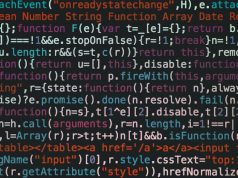
Understanding the Basics of Forex Trading
Before exploring the disruptive role of AI in forex risk and trading dynamics, it is crucial to have a strong understanding of the basics of forex trading. Forex trading involves speculating on the value of one currency against another, with the goal of profiting from fluctuations in exchange rates. This market operates 24 hours a day, five days a week, providing traders with ample opportunities to trade currencies from around the world.
In forex trading, currencies are always traded in pairs, such as EUR/USD or GBP/JPY. Traders can go long (buy) or short (sell) on a currency pair, depending on their predictions about its future value. The forex market is influenced by various factors, including economic indicators, geopolitical events, and market sentiment.
Key Elements of Forex Trading
Several key elements are essential to understand before delving into the disruptive role of AI in forex risk and trading dynamics:
- Currency pairs: Understanding the relationship between two currencies and how they interact is fundamental to forex trading.
- Technical analysis: Traders use various technical tools and indicators to identify patterns and trends in price charts.
- Fundamental analysis: Examining economic indicators and news events to anticipate market movements.
- Risk management: Employing strategies to mitigate potential losses and protect capital.
- Trading psychology: Recognizing emotions and maintaining discipline to avoid impulsive decisions.
The Role of Risk in Forex Trading
Risk is an inherent part of forex trading, and managing it effectively is crucial for success. Trading in the forex market involves both systematic risks (such as economic factors) and unsystematic risks (such as unforeseen events). Traders need to develop risk management strategies that align with their trading goals and tolerance for risk.
Effective risk management involves determining an appropriate position size, setting stop-loss orders, and diversifying trading strategies and currency pairs. Additionally, staying updated on market trends and news is essential to anticipate potential risks and take appropriate actions.
The Emergence of AI in Forex Trading
The emergence of AI has brought significant advancements to the field of forex trading, transforming both risk management and trading dynamics. AI involves the development of computer systems capable of performing tasks that usually require human intelligence, such as pattern recognition, decision-making, and learning from experience.
AI and Machine Learning: A New Era in Forex Trading
AI, combined with machine learning algorithms, has opened up new possibilities in forex trading. Machine learning algorithms can analyze vast amounts of historical data and identify patterns that may not be apparent to human traders. AI-powered systems can then use these patterns to make informed trading decisions.
Machine learning algorithms can also adapt to changing market conditions and continuously improve their performance. This adaptability allows AI systems to adjust trading strategies in real-time, maximizing the chances of profitable trades while reducing the risk of losses.
The Impact of AI on Forex Trading Strategies
The integration of AI in forex trading has revolutionized trading strategies. AI systems can analyze multiple indicators simultaneously and make trading decisions based on complex algorithms. This ability enables AI systems to execute trades at optimal times, potentially improving overall profitability.
Moreover, AI-powered systems can scan news articles, social media, and other relevant sources to identify market sentiment and incorporate this information into trading strategies. By considering a vast amount of data, AI can provide traders with valuable insights and improve the accuracy of predictions.

AI’s Role in Mitigating Forex Risk
One of the most significant benefits of AI in forex trading is its role in mitigating risk. AI systems can analyze historical data, identify patterns, and predict potential risks with a higher degree of accuracy than traditional methods.
How AI Predicts and Manages Forex Risk
AI analyzes historical market data, including price movements, economic indicators, and news events, to predict potential risks in the forex market. By identifying patterns and correlations, AI systems can provide traders with early warnings about potential market downturns or volatility.
Moreover, AI can help traders devise risk management strategies by providing recommendations on position sizing, stop-loss levels, and portfolio diversification. This integration of AI into risk management practices can enhance traders’ ability to protect their capital and minimize potential losses.
The Benefits of AI in Forex Risk Management
The benefits of using AI in forex risk management are numerous. AI systems can process vast amounts of data faster than humans, reducing response times and improving decision-making. Additionally, AI can eliminate human biases and emotions, which are often detrimental to effective risk management.
AI can also monitor multiple currency pairs and markets simultaneously, identifying correlations and interdependencies that human traders may overlook. By considering a broad range of factors, AI-powered risk management systems can provide more robust and accurate evaluations of potential risks.
The Disruptive Impact of AI on Forex Trading Dynamics
The intricate world of forex trading, characterized by its volatile currencies and rapid market shifts, is undergoing a seismic change with the introduction of advanced AI technologies. Oil Profit, in particular, is redefining how traders approach risk and execute strategies. With the capability to process vast amounts of data in fractions of a second, Oil Profit offers traders insights that were previously inconceivable. As a result, decision-making becomes more informed, strategies more adaptive, and the potential for profit, despite inherent market risks, is magnified. The future of forex, it seems, will be deeply entwined with the capabilities of quantum-enhanced artificial intelligence.
Changing Trading Patterns Due to AI
AI’s ability to analyze vast amounts of data and make real-time decisions has changed trading patterns significantly. With AI-powered systems executing trades based on predefined algorithms, the speed and frequency of trading have increased tremendously.
This shift towards automated trading, often referred to as algorithmic or high-frequency trading, has led to increased liquidity in the forex market and reduced the influence of individual traders on price movements. Traders now need to adapt to this new dynamic and find strategies that can capitalize on the increased trading activity.
The Future of Forex Trading with AI
The future of forex trading lies in the integration of AI and human expertise. While AI-powered systems can analyze vast amounts of data and make quick decisions, human traders bring intuition and contextual understanding to the table.
Integrating AI systems into trading platforms and providing traders with tools to leverage AI’s capabilities will likely become the norm. This fusion of human and AI intelligence has the potential to further enhance trading accuracy, profitability, and risk management in the forex market.
Challenges and Opportunities in AI-Driven Forex Trading
While AI presents numerous opportunities in forex trading, it also brings its own set of challenges that traders and industry participants need to address.
Potential Drawbacks of AI in Forex Trading
One potential drawback of AI in forex trading is algorithmic biases. Machine learning algorithms learn from historical data, which can contain biases and inaccuracies. If not appropriately monitored and controlled, AI systems may perpetuate these biases and generate inaccurate trading decisions.
Additionally, the reliance on AI systems may lead to a reduced human understanding of the underlying market dynamics. It is crucial for traders to continue developing their skills and understanding of the forex market to effectively leverage AI technology.
The Promising Future of AI in Forex Trading
Despite the challenges, the future of AI in forex trading looks promising. As technology continues to advance, AI systems will become more sophisticated and capable of handling complex market environments.
The integration of AI in forex trading can democratize access to financial markets, as it allows traders of all skill levels to leverage powerful analytical tools. This democratization can potentially level the playing field and create opportunities for novice traders to compete with seasoned professionals.
Conclusion
AI’s disruptive role in forex risk and trading dynamics is transforming the way traders approach the forex market. From enhancing risk management strategies to altering trading patterns, AI-powered systems are revolutionizing the industry.
However, it is important to understand the limitations and potential challenges associated with AI in forex trading. Traders should view AI as a tool to augment their own knowledge and expertise rather than completely replacing human decision-making.
As technology continues to evolve, the integration of AI and human intelligence will shape the future of forex trading, unlocking new opportunities and increasing efficiency in managing risk and executing trades.



